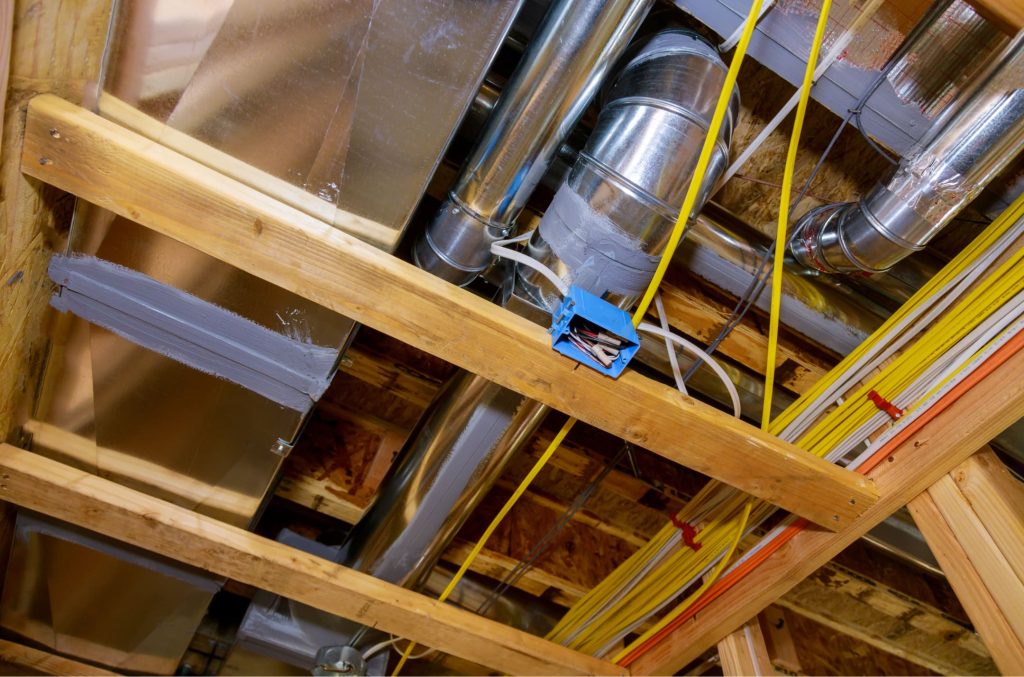When winter temperatures plummet, your home's heating system faces its greatest challenge. Understanding the relationship between your furnace and ductwork is essential for maintaining comfort and efficiency during these harsh months—and it's more complex than most homeowners realize.
Understanding the Furnace-Ductwork Relationship in Winter
Temperature differentials significantly impact how your furnace and ductwork interact. As your furnace generates warm air, it must overcome the cold temperatures in your ductwork, particularly in spaces cut off from the HVAC system, like crawl spaces and attics. This initial heat loss can affect overall system efficiency and response time.
Air pressure and flow dynamics affect your system's performance. Your furnace creates positive pressure to move heated air through the ductwork, but restrictions or leaks can disrupt this carefully balanced system. Proper airflow ensures even heat distribution throughout your home.
Humidity becomes a significant factor during winter months. As your furnace heats the air, relative humidity levels typically drop, affecting comfort and system efficiency. The interaction between dry air and your ductwork can create static electricity and increase dust circulation.
Common Winter Challenges
Cold spots in the home often result from imperfect furnace-ductwork interaction. Areas furthest from the furnace or those with poorly insulated ductwork may receive less heat, creating uncomfortable temperature variations throughout your living space.
Uneven heating frequently stems from ductwork issues rather than furnace problems. Blocked vents, crushed ducts, or improper balancing can create significant temperature differences between rooms, even when your furnace is operating correctly.
Increased energy bills during winter indicate inefficient interaction between your furnace and ductwork. When these systems aren't working together optimally, your furnace must work harder and longer to maintain desired temperatures.
Optimizing Your System for Winter
Regular maintenance tips include checking and replacing furnace filters monthly, ensuring all vents are unobstructed, and inspecting visible ductwork for damage. These tips improve system efficiency and prevent costly repairs.
Insulation considerations extend beyond the walls and attic. Properly insulated ductwork, especially in unconditioned spaces, can reduce heat loss, directly impacting HVAC efficiency and comfort.
Savvy thermostat usage can optimize the furnace-ductwork relationship—programming temperature setbacks when you're away, or sleeping allows your system to operate more efficiently. Modern smart thermostats can learn your preferences and adjust accordingly.
The Impact of Ductwork Design
The proper sizing and layout of your ductwork directly impact heating efficiency. Ducts that are either too small or too large can lead to airflow issues, while poor design can result in unnecessary heat loss and system strain.
Ductwork sealing and insulation are crucial in southwest Missouri's climate. Even small leaks can result in significant heat loss, forcing your furnace to work harder and increasing energy costs. Professional duct sealing can improve system efficiency by 20% or more.
Return air considerations are often overlooked but vital for system performance. Properly sized and placed return vents ensure your furnace receives adequate airflow, maintaining system efficiency and preventing unnecessary strain.
Energy Efficiency and Cost Savings
When examining utility bills, you will see how efficient interaction saves money. A well-maintained furnace-ductwork system can reduce heating costs by 15 to 30%. This savings comes from reduced runtime, lower component stress, and more effective heat distribution.
The long-term benefits of a well-maintained system include extended equipment life, fewer repairs, and consistent comfort throughout the home. Investment in system maintenance and improvements typically pays itself through energy savings and avoided repair costs.
When To Call a Professional
Signs of system inefficiency include:
- Spaces that never seem to reach the desired temperature
- Unusually high energy bills
- Strange noises coming from your ductwork
- Excessive dust in your home
- The furnace running constantly without achieving comfort
Professional help can provide reassurance and confidence regarding your heating system. HVAC professionals can perform detailed airflow measurements, identify hidden ductwork issues, and recommend specific improvements for your system. Their expertise can help you address issues and optimize your system for winter.
Please Don't Wait Until It's Too Late
When you recognize signs of inefficiency and take proactive steps to maintain both components, you can ensure optimal performance during southwest Missouri's coldest months.
For expert assistance with your home's heating system, contact Clements Plumbing Heating and Air. Our experienced technicians can evaluate your furnace-ductwork relationship and recommend targeted improvements to enhance your comfort and efficiency this winter.
